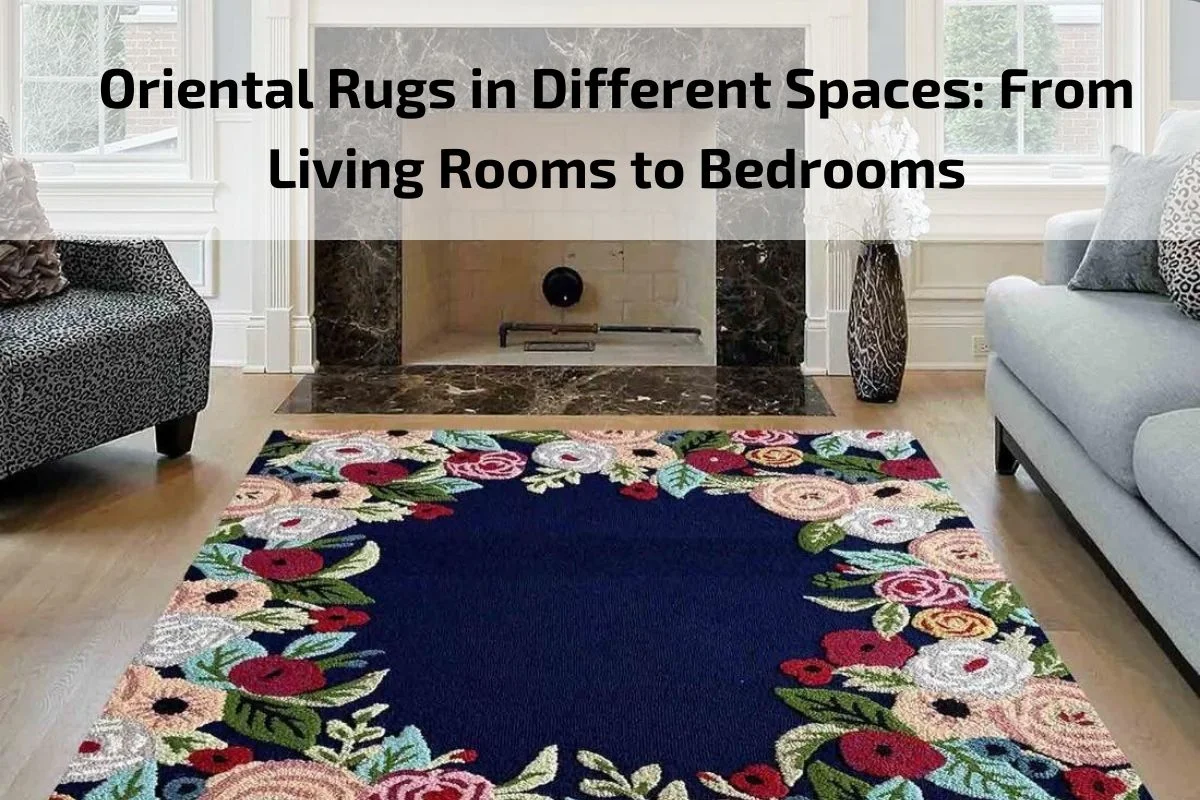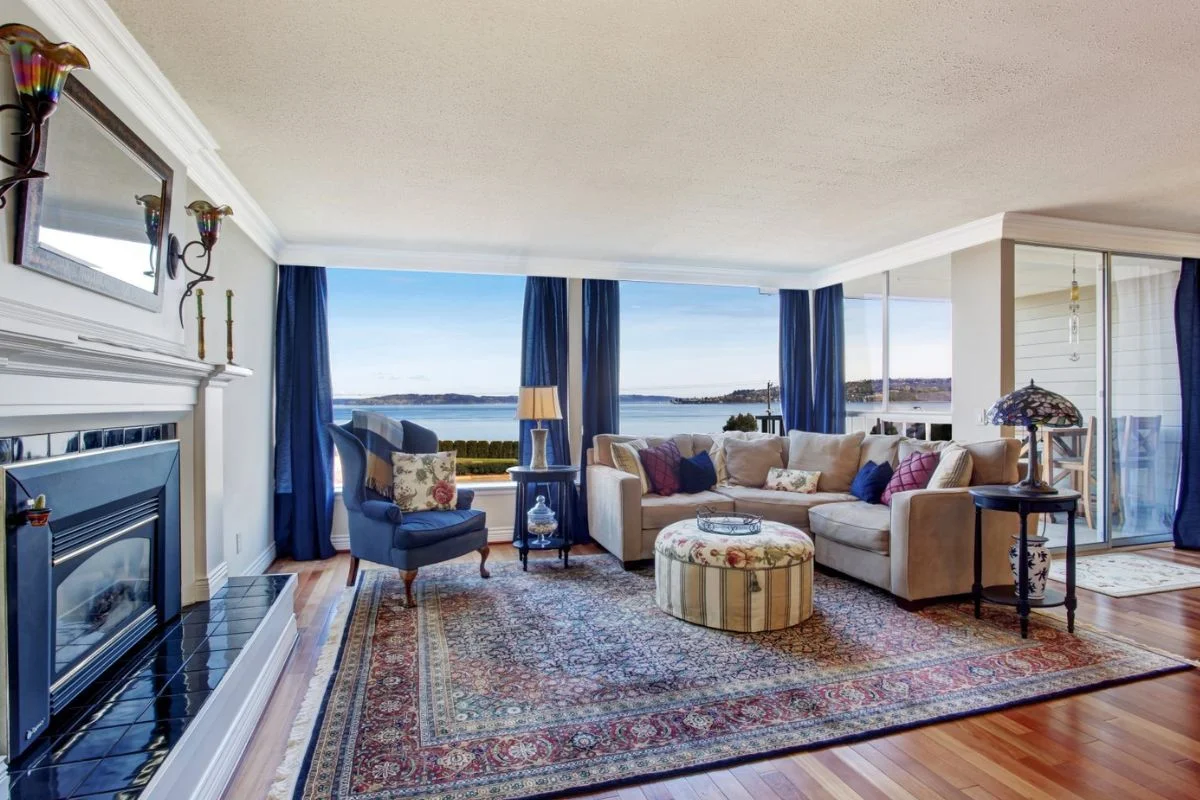
Oriental Rugs in Different Spaces: From Living Rooms to Bedrooms
As we embark on a journey through the rich and intricate world of oriental rugs, we find ourselves exploring not only the historical tapestry of traditions but also the contemporary ways in which these masterpieces of craftsmanship enhance our living spaces. In this installment, “Oriental Rugs in Different Spaces: From Living Rooms to Bedrooms,” we delve into the versatile and timeless appeal of these rugs, uncovering the transformative power they bring to various corners of our homes.
Oriental rugs, with their captivating designs and cultural significance, have transcended time and geography to become cherished elements in interior design. Beyond being floor coverings, they are storytellers, weaving narratives that span generations and continents. Now, let us embark on a curated exploration, discovering how oriental rugs seamlessly integrate into the fabric of our living spaces, from the communal heart of the home—the living room—to the serene and intimate realms of the bedroom.
Definition of Oriental Rug
Oriental rugs are handcrafted textile floor coverings characterized by intricate designs and patterns, typically originating from the geographic regions of the Middle East, Asia, and North Africa. These rugs are known for their exceptional craftsmanship, cultural significance, and the use of traditional weaving techniques that have been passed down through generations.
The term “Oriental” in Oriental rugs refers to the geographic origin of these textiles, encompassing a wide array of styles and designs specific to the diverse cultures and traditions of the regions they hail from. Persian, Turkish, Caucasian, Chinese, and Indian rugs are among the numerous varieties that fall under the umbrella of Oriental rugs, each reflecting the unique artistic and cultural heritage of its place of origin.
Oriental rugs are typically handwoven using materials such as wool, silk, or a combination of both, with the design often consisting of intricate patterns, geometric shapes, and symbolic motifs. The craftsmanship involved in creating these rugs is considered an art form, and the labor-intensive process includes knotting the fibers onto a foundation to form the desired patterns.
Advantages and Disadvantages of Oriental Rugs
Timeless Aesthetic Appeal:
Oriental rugs are renowned for their intricate designs, vibrant colors, and timeless patterns that contribute to a luxurious and visually appealing aesthetic in any space.
Exceptional Craftsmanship:
Handcrafted by skilled artisans, Oriental rugs showcase meticulous craftsmanship, with each rug often taking weeks or months to complete. This craftsmanship adds a unique and personal touch to each piece.
Cultural Significance:
Many Oriental rugs carry cultural and symbolic significance, with designs and motifs often rooted in the traditions, beliefs, and history of the region they originate from, adding depth and meaning to the rug.
Diverse Styles and Patterns:
The term “Oriental rugs” encompasses a wide range of styles, patterns, and designs, allowing homeowners to choose rugs that complement various interior design themes and preferences.
Durability and Longevity:
Oriental rugs, when properly cared for, are known for their durability and longevity. High-quality materials and hand-knotting techniques contribute to their ability to withstand wear and tear.
Investment Value:
Authentic Oriental rugs, especially those made with high-quality materials and craftsmanship, can appreciate in value over time, making them not only a beautiful addition to your home but also a potential investment.
Disadvantages of Oriental Rugs:
Cost:
Authentic Oriental rugs are often expensive due to the labor-intensive process of handcrafting, quality materials used, and the cultural significance associated with them. This cost can be a deterrent for budget-conscious consumers.
Maintenance Challenges:
Oriental rugs require special care and maintenance. Improper cleaning or exposure to harsh conditions can lead to damage. Stains and spills can be challenging to remove, necessitating careful attention to maintenance.
Sensitivity to Sunlight:
Prolonged exposure to direct sunlight may cause colors in Oriental rugs to fade over time. It is essential to strategically place these rugs in areas where they are not exposed to excessive sunlight.
Potential for Allergens:
The materials used in Oriental rugs, such as wool or silk, can be a source of allergens for some individuals. Regular cleaning and maintenance are crucial to minimize this risk.
Variability in Quality:
The market for Oriental rugs can vary significantly in terms of quality. Some rugs may be mass-produced or made with synthetic materials, diminishing their authenticity and value.
Sourcing Concerns:
Due to the high demand and value of Oriental rugs, there is a risk of encountering counterfeit or machine-made rugs being sold as authentic handcrafted pieces. Buyers need to be vigilant and purchase from reputable sources.
Oriental Rugs in Different Spaces: From Living Rooms to Bedrooms
Oriental rugs, with their timeless allure and rich cultural history, possess a remarkable versatility that allows them to seamlessly enhance the ambiance of various living spaces. From the communal heart of the home—the living room—to the serene and intimate realms of the bedroom, Oriental rugs have the power to transform and elevate the character of any room they grace.
Living Room Elegance:
The living room serves as a focal point for social gatherings, making it an ideal space to showcase the captivating beauty of Oriental rugs. Here, these rugs act as central elements that anchor the entire room. Their intricate patterns and vibrant colors become conversation starters, adding layers of visual interest to the overall décor. A well-chosen Oriental rug can define the seating area, tying together furniture pieces and creating a harmonious and inviting atmosphere. Whether your living room exudes a classic, modern, or eclectic vibe, the right Oriental rug can effortlessly blend with the existing aesthetic, infusing a touch of tradition into contemporary living spaces.
Bedroom Retreats:
In the bedroom, Oriental rugs transition from communal spaces to more private sanctuaries. Placing an Oriental rug in the bedroom introduces an element of luxury and comfort underfoot. The softness of the rug provides a warm landing as you step out of bed, creating a cozy and indulgent atmosphere. The intricate patterns and soothing colors of the rug contribute to a serene ambiance, turning the bedroom into a retreat that seamlessly marries cultural richness with personal comfort. Whether your bedroom style is minimalist, bohemian, or traditional, an Oriental rug can serve as the perfect accent, elevating the entire room and adding a layer of sophistication to your private space.
Harmonizing Design Elements:
One of the remarkable features of Oriental rugs is their ability to harmonize with diverse design elements. In living rooms, they complement and accentuate furniture arrangements, while in bedrooms, they integrate effortlessly with bedding and decor accessories. The wide range of styles and patterns available in Oriental rugs ensures that you can find the perfect rug to match your existing design theme or even become the focal point around which you build the entire room.
Choosing the Right Size:
Whether adorning the living room or bedroom, selecting the right size of the Oriental rug is crucial. In the living room, ensure that the rug is large enough to encompass the main seating area, allowing the furniture legs to rest comfortably on the rug. In the bedroom, consider placing the rug partially under the bed, extending beyond the sides for a balanced and aesthetically pleasing look.
Maintenance Mastery: Preserving the Beauty of Oriental Rugs
Maintaining the beauty of Oriental rugs involves a delicate balance of care and attention to ensure their longevity and continued aesthetic appeal. These exquisite handcrafted textiles require specific maintenance practices to preserve their intricate designs, vibrant colors, and the cultural heritage woven into every knot. Here’s a guide to mastering the art of maintenance for Oriental rugs:
Regular Vacuuming:
Implement a routine vacuuming schedule to remove surface dust and debris. Use a vacuum cleaner with a beater bar or brush attachment, gently moving it in the direction of the rug’s pile. Regular vacuuming helps prevent particles from settling into the fibers.
Rotate Periodically:
Minimize wear and tear by rotating the Oriental rug periodically. This ensures that high-traffic areas receive even exposure, preventing uneven fading or wear on specific sections of the rug.
Immediate Stain Treatment:
Act promptly when spills occur. Blot liquid spills with a clean, dry cloth to absorb as much moisture as possible. Avoid rubbing the stain, as this can spread it further. For solid spills, carefully lift the material and clean the affected area.
Professional Cleaning:
Engage professional rug cleaners for deep cleaning at regular intervals, typically every one to three years, depending on usage. Professional cleaners have the expertise to remove embedded dirt, stains, and allergens without causing damage to the delicate fibers.
Avoid Sun Exposure:
Minimize the rug’s exposure to direct sunlight, which can lead to fading over time. If possible, use window treatments such as blinds or curtains to shield the rug from prolonged sunlight exposure.
Use Rug Pads:
Place rug pads underneath Oriental rugs to provide additional cushioning and prevent slipping. Rug pads also help protect the rug’s foundation from abrasion against the floor.
Gentle Spot Cleaning:
For small stains, use a mixture of mild detergent and water to gently spot clean the affected area. Test the solution on an inconspicuous part of the rug first to ensure it doesn’t affect the colors or fibers.
Brushing and Grooming:
Use a soft brush or broom to gently groom the rug’s pile in the direction of the weave. This helps maintain the rug’s appearance and prevents fibers from becoming matted or tangled.
Avoid Harsh Chemicals:
Refrain from using harsh chemicals, bleach, or strong cleaning agents on Oriental rugs, as they can damage the delicate fibers and alter the colors. Stick to mild, pH-neutral cleaning solutions.
Climate Control:
Maintain a stable indoor climate to prevent excessive fluctuations in temperature and humidity. Oriental rugs are sensitive to environmental conditions, and stable climate control helps prevent warping, stretching, or shrinking.
Pet Caution:
Exercise caution with pets around Oriental rugs. Promptly clean any pet accidents to prevent stains, and consider placing a protective barrier, such as a pet-friendly rug, in areas with heavy pet traffic.
Conclusion
In conclusion, the art of maintaining Oriental rugs goes beyond mere upkeep; it is a commitment to preserving the intricate craftsmanship, cultural richness, and timeless beauty woven into every fiber. As we’ve explored the various facets of maintenance mastery, from regular vacuuming to professional cleaning, it becomes evident that caring for these handcrafted treasures is both an art and a science.




0 comments